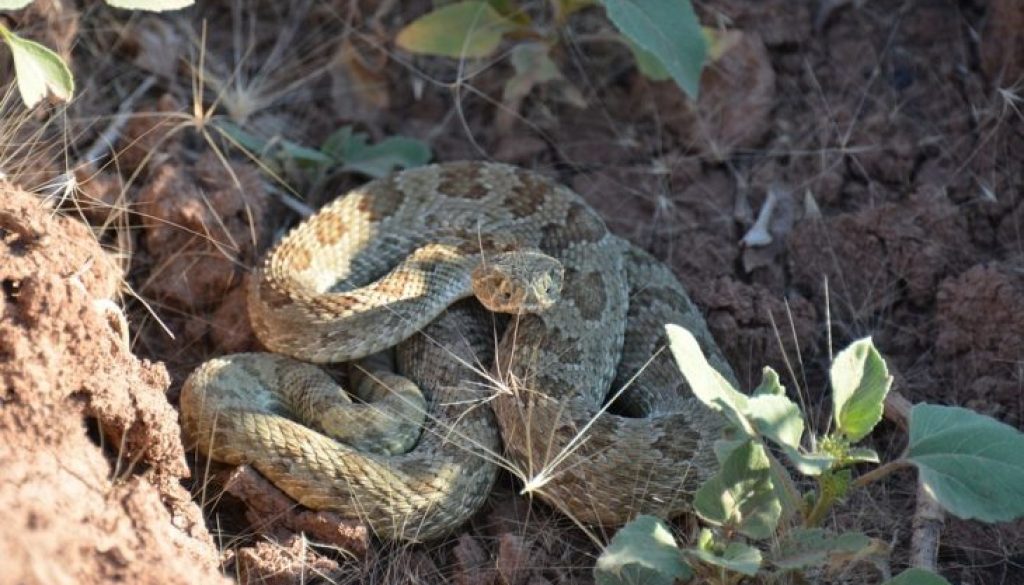What to Do if You Encounter Venomous Creatures in New Mexico
We hope you are enjoying summer in New Mexico with your family and friends! We’ve been sharing a lot of information about the best places to go camping, the more remote camping destinations for nature lovers, and how to stay safe while hiking in New Mexico. We want to give you all the information that you need to have the best New Mexico summer experiences and make memories all summer long. This prompted a question from one of our valued readers: John Ryan asked, “Is there much danger of snake or insect poisoning when camping?” Well, that is a great question, John, and well worth taking some time to discuss to ensure that everyone stays safe and knows what to do if they encounter any venomous creatures in New Mexico while hiking or camping.
Different Types of Venomous Creatures in New Mexico

One of our favorite things about New Mexico is the various forms of wildlife that you’ll find in this beautiful state. There are a variety of majestic owls, beautiful birds, grey wolves, bighorn sheep, black footed ferrets, river otters, and even cougars, not to mention the range of amphibians, reptiles, and insects that you are likely to see on your New Mexico summer adventures. Yet, many of these animals are dangerous and poisonous if they manage to bite or sting you. And a lot of them are likely to be encountered on your camping and hiking trips.
There are snakes, including rattle snakes and coral snakes that have a toxic venom that could potentially kill you. Then, you have spiders, like black widows and brown spiders that have deadly bites. There are even a number of scorpions, with the bark scorpion being the most hazardous and likely to kill you.
How to Recognize Venomous Creatures in New Mexico
Not all snakes, spiders, and scorpions in New Mexico are going to be poisonous; and of those that are, not all of them will be a serious risk to your life. However, if you have any doubts, it’s a good idea to seek treatment quickly. Most of these venomous creatures in New Mexico are more active in the spring and summer, which just happens to be when you are more likely to vacation, camp, and hike where they live.
Venomous Snakes in New Mexico
New Mexico has the second highest number of rattlesnake bites in the United States. Yet, they really want to avoid you, your children, and your pets. They would prefer to hide, rather than attack. Most rattlesnake bites happen because someone accidentally gets too close to one without realizing it. In most cases, they won’t kill you, but you might lose a limb if you don’t act quickly, and they can be deadly. They are most active after it rains and are frequently found in tall grasses where they are trying to hide and hunt prey. You’ll recognize a rattlesnake by the rattle on the end of its tail. It sounds like a rattle, and looks like this:

When it comes to coral snakes, however, this can be a bit more confusing. They happen to look quite a bit like milk snakes, which are not venomous. So, the trick to telling the difference is in this little rhyme: “Red touches Yellow will kill a fellow; but Red touches Black, venom lack.” Another version is “Red and Black is safe for Jack, but Red and Yellow kills a fellow.” If a snake has stripes where the red and black are touching, then this is a milk snake; and if it has stripes where the red and yellow are touching, then it is probably a venomous coral snake.
Check out the comparison image below for a clearer idea of the difference:

In this image, the red looks a little orange at the coral snake’s head and is touching the yellow, which looks a little white, on his lower side. It is also touching black, but because it is touching yellow too, it differs from the milk snake. Thus, the rhyme is very helpful, but keep in mind that the colors may not always appear perfectly red or yellow. While these two look quite different, there are cases where they will look far more similar. So, be careful and remember the little rhyme to help you steer clear of these venomous creatures in New Mexico.
Venomous Spiders in New Mexico
When it comes to spiders, the biggest concerns are going to be the black widow spider and the brown spiders. You may know the black widow as a shiny black spider with a big body and a red hourglass shape on it. However, the males do not have this hourglass shape, so you might not recognize the spider for what it is. And sometimes, the red marking doesn’t look as much like an hourglass as you might expect. Do not get close or handle the spider to find out, though. This is quite dangerous. If you are bitten, you will experience a lot of pain for several hours, and you will need to get treatment quickly. They like to live in dark areas, near dead wood, and cluttered spaces. As you can see below, black widow spiders do not always look as you might expect.

There are a few different types of brown spiders. You may recognize the brown recluse by the violin marking on its body, but like black widows, they do not always have the same identifying marks. There are blanda brown spiders, desert recluse spiders (or Arizona brown spiders), and Apache brown spiders in New Mexico that are all closely related to the typical brown recluse. They can be light brown to dark brown, and are about one inch in length. They like to live under logs, near dead cacti, under rocks, and in burrows in the ground. You are particularly likely to encounter them while hiking or camping in New Mexico.

Venomous Scorpions in New Mexico
Then, you have the scorpions. These frightful looking creatures are just as dangerous as they appear. In New Mexico, you are most likely to encounter the deadly Arizona bark scorpion in southwest New Mexico. Scorpions can vary in color, tan, brown, or even black. They are good at blending in with their surroundings. They can climb almost anything, but prefer to be where it is dark and damp. So if you are anywhere near water, especially at night, you must be particularly careful. They have pincers in front, but they sting with the tip of their tails.

Tips for Avoiding Venomous Creatures in New Mexico
The best thing to do to avoid venomous creatures in New Mexico is NOT to simply stay inside and avoid enjoying your summer and the beautiful nature of the state. In fact, many of these venomous creatures will happily come inside your home and hide out in dark corners and cluttered areas, so really nowhere is completely safe. Rather, you simply need to be cautious when enjoying the wild.
Knowing that these creatures like to live in dark and damp places or near rocks, etc., can help you to be careful in those areas and keep an eye out for where they are likely to be. Listen for the rattlers of the rattlesnake, avoid handling snakes, spiders, and scorpions, and shake out your shoes before you put them on.
What to Do if You Encounter Venomous Creatures in New Mexico
If you see a venomous creature or suspect that you are looking at a venomous creature, then you should back away, avoid startling the creature, and leave it alone. Do not try to catch it or get a closer look. Now, if you do get bitten or stung, then what you do next depends on how it happened. If it was a spider, and you killed it or if you can safely catch it without touching it, then you can take it with you to the emergency room. With a snake or scorpion, leave it alone. If you can safely take a picture, then do so. If not, try to remember what it looked like to pass the information along to the doctor or poison center specialist.
Then, call the New Mexico Poison Center (1-800-222-1222) and get to the doctor as quickly as possible. In most cases, you can avoid death through quick action and medical intervention.

If you have a child that is acting strangely, screaming or crying in pain, or experiencing rapid eye movements, then you must act quickly. Call the New Mexico Poison Center and/or take them to the nearest emergency room. Sometimes, you may not be able to see the wound and the child may not be able to tell you what happened. Children are the most at risk of dying from venomous bites and stings.
More Tips for Venomous Creature Encounters in New Mexico
Do not follow any advice that you may have picked up from the movies or TV. Trying to suck the venom out of a wound or attempting any other do-it-yourself procedures is likely to make the situation worse while wasting much needed time in seeking medical care. Avoid hiking or camping alone, so you will have someone to help you if something happens. Also make sure that you have a working phone and cover your legs and feet when hiking. Wear good hiking boots! If you do see a venomous creature, simply avoiding it will often be enough to prevent injury. They don’t usually want to attack you and would prefer to hide from you if they can.
If you have any tips or advice about what to do when encountering venomous creatures in New Mexico, or if you have a story about this happening to you or someone you love, please share it in the comments. There are a variety of tips ways to keep venomous creatures of ou your home, so scoure the internet for keep yourself, and your family, safe. Also share this post with friends and family so they can be safe while making memories on their New Mexico summer adventures.



